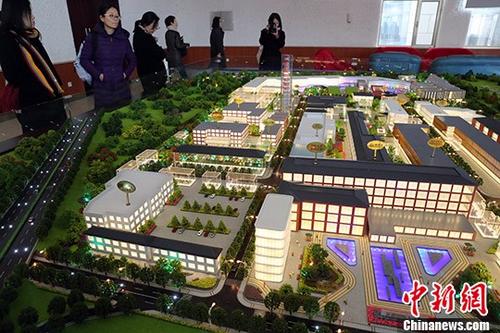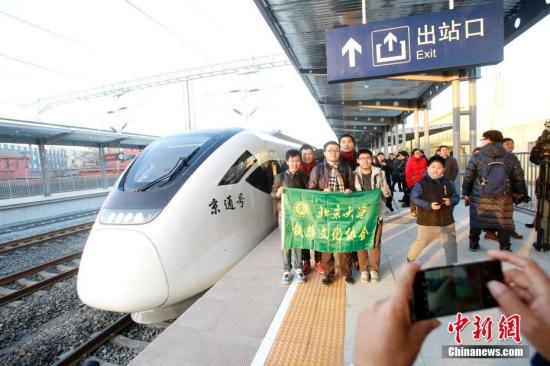The detailed regulations of Beijing City Sub-center are open to promote the population relief in the central city.
BEIJING, Beijing, March 29 (Reporter Zeng Nai) The third meeting of the Standing Committee of the 15th Beijing Municipal People’s Congress was held in Beijing from the 29th to the 30th, to hear and review the draft of the Controlled Detailed Planning of Beijing City Sub-center. The draft makes it clear that it is necessary to promote the relocation of Beijing-level party and government organs and municipal administrative institutions in the central city in an orderly manner, and promote other related functions and population relief in the central city. The sub-center should build a Millennium city worthy of the new era.
On September 13, 2017, the Beijing Urban Master Plan was published, which clarified the urban spatial layout of "one core, one master and one deputy". "One pair" is the sub-center of Beijing city.
Sub-center: Building a Millennium City worthy of the new era
Zhang Wei, director of the Beijing Municipal Planning and Land Commission, introduced the planning of the city sub-center on the same day. With regard to the positioning of the sub-center, Zhang Wei said that according to the official reply of the CPC Central Committee and the State Council to Beijing’s overall urban planning, Beijing’s sub-center is a wing of Beijing’s new two wings. It is necessary to focus on handling the relationship between the sub-center and the central city, the relationship with the peripheral areas of the sub-center, and the relationship with the eastern part of the city and the surrounding areas of Tongzhou, and strive to become a world-class demonstration zone of harmonious and livable capital, a new urbanization demonstration zone and a coordinated development demonstration zone of Beijing-Tianjin-Hebei region.

What is the spatial structure of the sub-center? Zhang Wei introduced that an urban spatial structure with one belt, one axis and multiple groups will be built, highlighting the urban characteristics of water city integration, blue-green interweaving and cultural inheritance.
Specifically, it will follow the concept of China’s city-building, the tradition of Beijing’s city-building and Tongzhou’s regional context, form a spatial structure of "one belt, one axis and many groups", highlight the urban characteristics of water city integration, blue-green interweaving and cultural inheritance, adhere to the people-centered principle, and realize the multi-regulation integration of special systems such as green transportation, ecological municipal administration, people’s livelihood sharing and landscape.
Drive other related functions and population relief in the central city.
The draft puts forward that it is necessary to focus on undertaking the functions of the central city and population relief, promote the organic combination of administrative functions and other urban functions, and take administrative office, business services and cultural tourism as the leading factors to form a comprehensive urban function.
Regarding the planning of administrative office areas, the draft clearly states that it is necessary to give play to the exemplary role of administrative office areas, orderly promote the relocation of municipal party and government organs and municipal administrative institutions in the central city, and promote other related functions and population relief in the central city.
The draft also proposes that relying on the Canal Business District and the sub-center comprehensive transportation hub, we should strengthen the detailed implementation of business service functions, formulate detailed access thresholds, incentive policies and exit mechanisms, and focus on undertaking business service functions in some central cities; Give full play to Tongzhou’s profound historical and cultural advantages, focus on cultural tourism areas and Songzhuang cultural and creative industry clusters, and promote the integration of culture and tradition, culture and technology, and culture and the times; Form high-quality comprehensive urban functions around the three leading functions, build a livable living environment by relying on the green center and home center of the city, build high-quality public service facilities, and provide more high-quality public services for residents.

Zhang Wei said, "Adhere to a high starting point, high standards and high level, implement the requirements of world vision, international standards, China characteristics and high-point positioning, and plan, construct and manage the Beijing City Sub-center with the most advanced concepts and world-class standards."
In view of the most concerned aspects of people’s daily life, such as urban comprehensive transportation, job-residence balance, public space, etc., the regulatory detailed regulations have also been deployed:
First, build a people-oriented, safe and efficient comprehensive transportation system. Taking rail transit and public transportation as the leading factor, giving priority to ensuring walking and cycling trips, and building a road network system of "small blocks and dense road networks".
Second, build a livable city with a balanced occupation and residence. Optimize the structure of urban and rural residential land, establish a mixed and orderly land layout, strengthen housing security, create a fair, high-quality and intelligent service system for people’s livelihood, and promote the balanced development of sub-centers.
Third, create a high-quality and humanized public space. Build a clear and continuous public space system, dig deep into space resources, increase the total amount of public space, build a public space with complex functions, and improve the quality and artistry of public space.
Fourth, improve the management level of planning and construction. Handle the relationship between government and market, rigidity and flexibility, control rigid constraints, avoid major structural problems, and reserve flexible space for urban development by delineating strategic blank areas.
Fifth, innovate the management system of urban construction, improve the level of urban intelligent management, adhere to technological innovation to serve the people, and let information run more and the people run less errands.
Municipal People’s Congress suggested: building a healthy city with sustainable development.
In view of the positioning and construction of the sub-center, the Beijing Municipal People’s Congress Urban Construction Environmental Protection Committee put forward many suggestions.
How to build a healthy city with sustainable development? Hao Zhilan, chairman of the Beijing Municipal People’s Congress Urban Construction Environmental Protection Committee, said that Tongzhou District has experienced the development process from satellite city to key new city to focusing on Tongzhou. Although remarkable achievements have been made in urban construction and management, there are still many gaps from the requirements of the world-class harmonious and livable capital demonstration zone. It is necessary to improve the level of refined urban management and prevent new "urban diseases" from appearing in sub-centers.
Hao Zhilan specifically talked about four points:
First, understand the current situation of urban construction and management in Tongzhou District, speed up the renovation and renewal of the old city, realize the overall promotion with the new, and improve the sense of gain of Tongzhou people.
Second, according to the standards of the core area, improve the refined management level of sub-center cities, implement the system of street length and alley housekeeper, and promote the systematization, scientificity, intelligence and rule of law of social governance. It is necessary to strengthen the management and law enforcement power of sub-centers and speed up the construction of joint law enforcement between districts, streets and townships.
Third, seriously study the relationship between building height control and land use efficiency, further refine and improve the planning of transportation, municipal administration, ecology, public services and other supporting facilities, accelerate the allocation of high-quality resources such as education, medical care, culture and sports in the central city to the sub-center, and optimize the transfer system of suburban railways, subways and ground buses.
Fourth, solve the problem of job-housing balance, speed up the establishment of a housing system with multi-subject supply, multi-channel guarantee and simultaneous rent and purchase, vigorously develop the housing rental market, especially long-term lease, and promote the supply of shared property housing. (End)